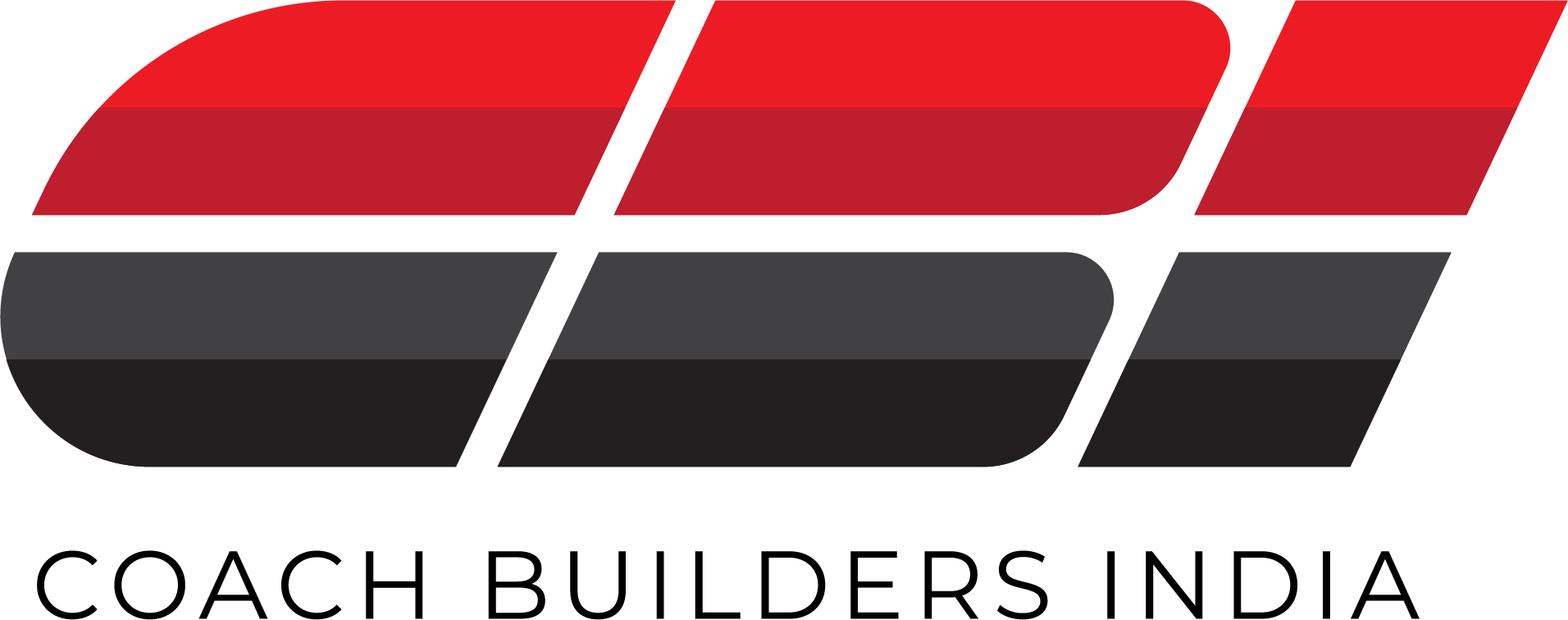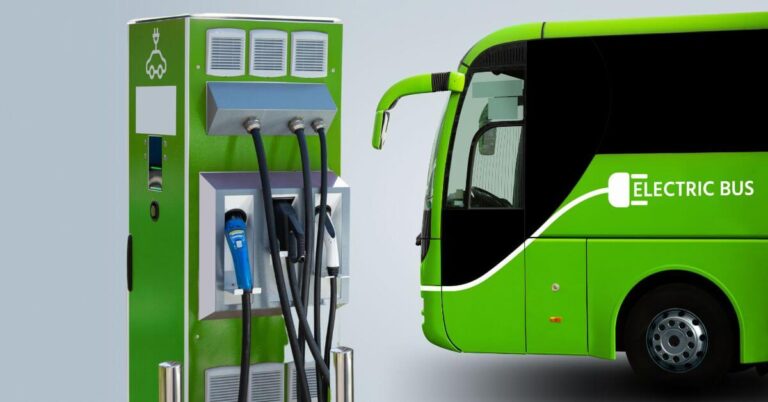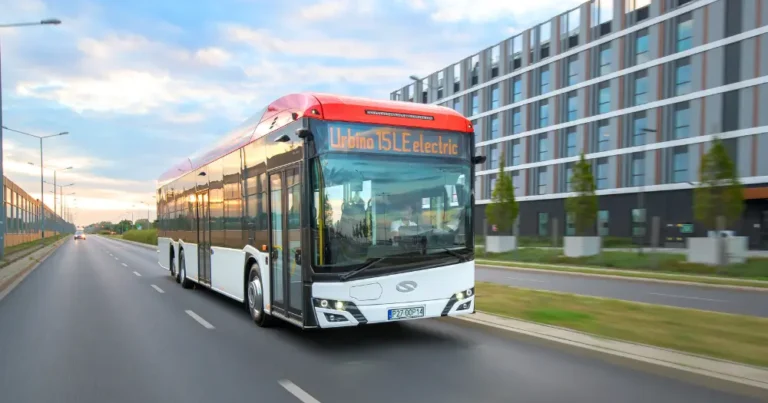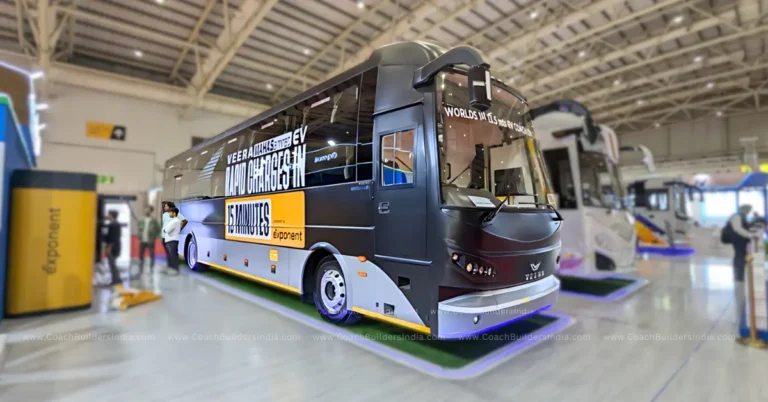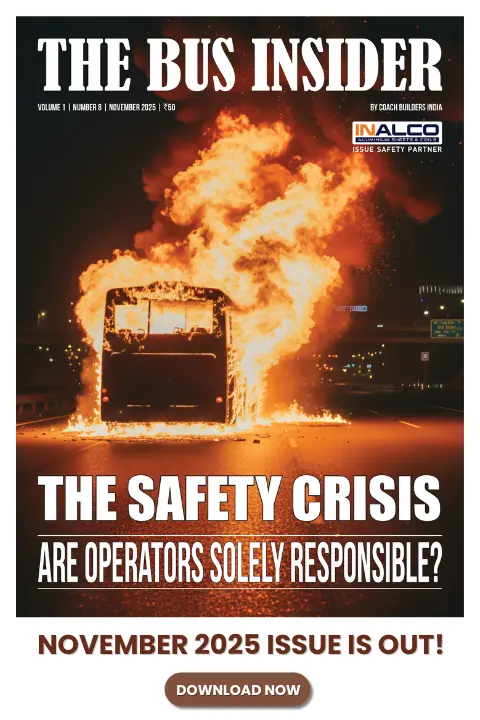GEMS Shows How Private Operators Can Electrify India’s Intercity Highways
Electric bus operator interview: Director Sunil Ravindran reveals the challenges of long-distance electric bus operations and the gaps slowing private adoption.
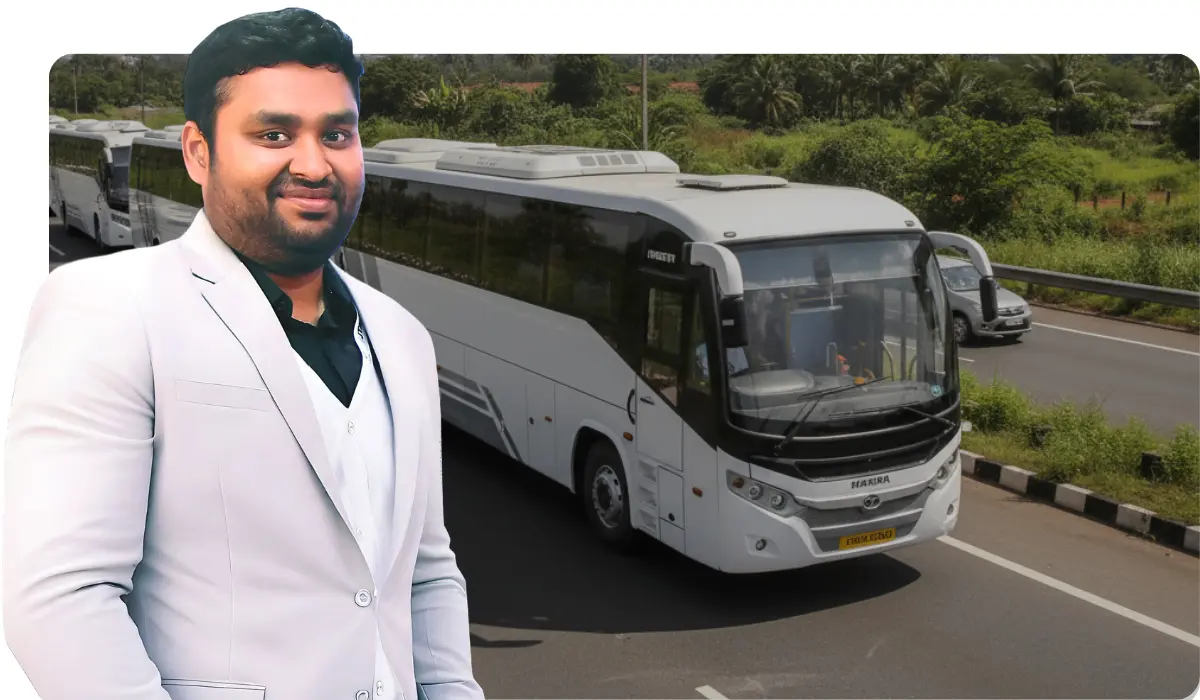
India’s push to electrify public transport has gained significant momentum in recent years, particularly in city-based operations. Government incentives, regulatory support, and growing awareness of sustainability have driven electric buses onto urban routes. Yet long-distance intercity travel has largely remained a frontier, with electric adoption gaining limited traction, especially among private operators.
This is where Green Energy Mobility Solutions (GEMS) is making its mark, pioneering high-mileage, long-haul electric mobility as one of the first private operators in the space. Founded by Sunil Kumar Ravindran, a veteran of South India’s interstate bus industry, and Balavignesh Subramani, Co-founder and Director, with operational expertise in freight and mining, GEMS brings together deep industry experience and a forward-looking vision.
The company’s strategy is not limited to running electric buses – it integrates fleet operations, renewable-backed charging infrastructure, and innovative leasing models to create a scalable, ecosystem-driven approach to intercity EV deployment.
The company recently signed two landmark MoUs at the Passenger Vehicle Expo 2.0 in Chennai – 100 Tata Motors Magna EV coaches and 50 leased buses through Electrigo. These agreements position GEMS to electrify key South Indian corridors, proving that electric mobility is ready to power India’s intercity highways.
In this candid conversation, Director Sunil Ravindran reveals the challenges of long-distance electric bus operations, the gaps slowing private adoption, and how GEMS is pioneering an integrated model to make electric mobility work on India’s highways.
Let’s start at the beginning. What sparked your journey into electric mobility, and how did the vision for Green Energy Mobility Solutions take shape, from idea to execution?
I’ve spent decades in interstate mobility, and over the years, I’ve seen it all – the opportunities, the challenges, and the constant battle with fuel costs, compliance, and sustainability concerns. Somewhere along the way, it became clear to me that the future of transport won’t rely on fossil fuels.
And if that change is inevitable, why shouldn’t we be the ones to lead it? That’s really how GEMS was born. What started as a business idea around electric fleet operations quickly evolved into something bigger – an ecosystem play.
We built Mana Energy to accelerate high-power charging and renewable integration, and founded Ziel to drive digital fleet intelligence. Instead of small pilots or piecemeal solutions, we wanted a model that connects vehicles, energy, and digital platforms into one seamless, scalable system.
“I see GEMS shaping the blueprint for India’s sustainable transport ecosystem, showing that electric mobility isn’t just a city phenomenon, but a nationwide, long-haul solution. If we succeed, the ripple eff ects will transform how India moves people and goods.”
Balavignesh Subramani, Co-founder & Director, GEMS
Electric intercity transport is still a relatively bold space to enter. What drew you specifically to the intercity segment, and how do you see GEMS carving a niche in this emerging electric frontier?
It is bold, no doubt! But that’s also exactly where the impact is biggest. Intercity travel drives some of the highest fuel consumption and emissions in commercial transport. While city electric buses have seen strong government support, intercity routes have largely been overlooked, even though millions of passengers travel long distances every day.
For me, stepping into intercity wasn’t about being different for the sake of it. It was about tackling the harder problem first.
GEMS aims to embed reliability and efficiency into long-haul electric travel. That’s our niche, showing that electric buses can handle long routes, high utilization, and tough operating conditions at scale. It also allowed us to take the hard-earned experience from running ICE eets in intercity operations and put it to a bigger, greener purpose.
You recently inked an MoU with TATA Motors for the Magna EV. Why the Tata Magna? Were there specific performance or operational metrics that made the Magna stand out?
We evaluated multiple models, but the TATA Magna EV stood out because it is purpose-built for intercity travel. Our decision hinged on a few critical parameters – battery range, energy efficiency, passenger comfort, and after-sales support.
Tata Motors also brought the credibility of being India’s leading commercial vehicle manufacturer and a strong service network, something non-negotiable when scaling fleet operations. Magna gives us confidence that our passengers will experience both safety and comfort, while our operations team has a dependable vehicle capable of handling high-mileage routes with ease.
Diwali Special: How Bus Operators Gear Up for India’s Festive Rush
You’ve also partnered with ElectricGo to lease 50 electric buses. How will the rollout be structured, and how do you plan to integrate these buses into your intercity routes?
Leasing is a crucial piece of our strategy. Through our MoU with ElectricGo, we are inducting 50 vehicles on a phased basis. The model is simple – ElectricGo handles procurement, registration, and compliance, while GEMS focuses on operating them at maximum efficiency.
The rollout will span Q4 2025 and Q1 2026, starting with shorter intercity corridors before scaling up to longer routes. This phased approach allows us to train teams, optimize charging schedules, and ensure passengers adapt seamlessly, without disrupting service.

Which regions or corridors are you targeting for the first wave of deployment, and how many vehicles will be operational in Phase 1?
Our first deployments are focused on high-demand corridors in South India, including Chennai, Bangalore, Hyderabad, and Coimbatore. These routes are commercially strong, with heavy passenger traffic and proven intercity bus demand.
In Phase 1, combining leased and procured vehicles, we aim to have 50–60 buses on the road by mid-2026. As depot infrastructure strengthens and route data matures, we plan to scale up to 100+ buses.
What does your energy strategy look like? Are you building your own infrastructure, partnering with charge point operators, or both?
To unlock the full potential of our fleet, we need control over energy sourcing. That’s why Mana Energy Solutions, our sister company, is setting up high-capacity charging depots along key corridors, supported by renewable power and storage solutions.
While we’ll collaborate with existing charge point operators where available, our core approach is to develop GEMS-owned charging hubs at strategic nodes. This ensures our fleet isn’t dependent on fragmented infrastructure and can maintain the uptime levels expected of intercity operators.
What was the “first shock” you experienced when starting long-distance electric bus operations, and what have been the biggest challenges since?
The first shock is always the gap between the technology promise and operational reality. Range anxiety, charging downtime, and the upfront cost of vehicles are real challenges. For intercity travel, route planning and depot readiness are non-negotiable – without them, operations can quickly suffer.
But the biggest lesson is that challenges fade when you design for the entire ecosystem, not only the vehicles. By synchronizing vehicles, energy, and digital platforms, we’ve de-risked our pilots and built the confidence to scale.
This Bus Operator from Assam Turned the Worst Seats into the Hottest Tickets
Most private fleet operators still hesitate when it comes to electrifying their fleet. Having taken the plunge yourself, what would you say to others still on the fence?
The transition is inevitable. Whether you choose to lead it or lag behind is the decision you must make. The economics of electric mobility may seem challenging at first, but once you factor in fuel savings, compliance benefits, and long-term brand value, it becomes a winning move.
My advice – don’t wait for the perfect moment. Start small, partner wisely, and build operational muscle. Because, at the end of the day, the market, passengers, and regulators are all moving toward electric mobility.
What’s the big picture? Where do you see GEMS Mobility Solutions in 3 to 5 years, and what role do you hope to play in shaping India’s sustainable intercity transport landscape?
In the next 3–5 years, I see GEMS emerging as India’s leading operator of electric intercity and high-performance commercial vehicles. Our vision is to run a few thousand EVs across both passenger and utility segments, all powered by renewable-backed depots.
Beyond buses, we plan to expand into electric trucks and mining equipment, pioneering electrification in these heavy-duty categories. This will not only strengthen our position in commercial EV operations but also tackle some of the most energy-intensive, hard-to-abate sectors.
Catch the latest Bus Industry updates, Exclusive Interviews, Bus News, and International Bus News on Coach Builders India. Download the latest issue of the The Bus Insider magazine for more insights.
